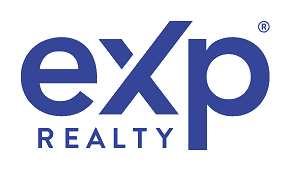Owner financing, or seller financing, is an alternative to traditional financing. If a homebuyer doesn’t qualify for a loan from a mortgage lender, a home seller may finance the transaction, so the buyer doesn’t have to go to traditional lenders, easing the stress of the mortgage lending experience.
However, what exactly is seller financing, and how does it work? What are the advantages to buyers and sellers?
What Is Seller Financing?
Seller financing is a form of financing in which the homeowner finances the home sale. For buyers with poor credit or who otherwise can’t qualify for traditional mortgages, seller financing arrangements can be a lifesaver. It has benefits for both buyers and sellers, but there are drawbacks as well.
A seller financing agreement usually has a shorter loan term than a traditional loan or a conventional mortgage. Five years is typical, with a balloon payment due towards the end of the term agreement. However, that’s just one way of setting up a seller-financed real estate agreement.
There are many types of seller financing. Some common types include
- All-inclusive mortgage: A seller-financed mortgage is an alternative to a regular mortgage which involves the owner offering to act as a lender to potential buyers, offering them direct financing. However, the loan term in a seller-financed deal is typically much shorter. The shorter period decreases risk for the seller.
- Junior mortgage: This type of owner-financing contract involves the buyer applying for traditional bank financing. However, the property seller lends the buyer money to make the down payment on their mortgage, and the buyer must pay back as per the agreed-upon terms. This kind of seller-financed loan helps ensure affordable mortgage lending is available to all buyers.
- Land contract: This form of seller financing involves the buyer taking out a loan on the property but the seller retaining ownership until the buyer pays them back in full. The buyer usually gets an equitable title, providing temporary shared ownership until they get a full legal title.
- Assumable mortgage: If the seller owes a mortgage to a traditional mortgage lender, the buyer can assume this mortgage and stick to the original payment requirements. Approval for this real estate transaction may depend on the buyer’s credit history.
Benefits of Seller Financing for Homebuyers
For homebuyers, properties with seller financing offer many benefits compared to regular mortgage loans. For one, when you deal with seller financing, closing costs are usually a lot lower compared to a traditional real estate transaction.
As soon as you cut out credit unions, banks, and conventional lenders, you can avoid mortgage origination costs and other fees loan lenders tend to charge.
With a seller-financed sale, approval is usually quicker. The process doesn’t tend to drag out as much as when loan underwriters are involved. However, the seller might still want to perform a credit check and obtain a credit report to ensure you have the financial stability to pay back the entire purchase price.
Getting a residential mortgage loan application approval is sometimes difficult if you are self-employed and have difficulty proving monthly income or don’t have an established credit record. The financing process might be challenging, so you might look for a house with seller financing available.
If you have bad credit, seller financing can also allow you to improve your credit over time.
Some homebuyers like the idea of seller financing because they expect more favorable loan terms, such as lower interest payments. However, seller financing terms may not always involve lower interest rates.
One of the realities of seller financing is that while it is an excellent alternative to bank financing, interest rates on an owner financing agreement might not always be lower. In fact, in many cases, it will be higher, as that is one incentive for the seller to offer such financing.
However, with good interest rate negotiation, the seller may be willing to lower the rate in exchange for a larger down payment or a shorter loan term.
There are other buyer benefits as well. For example, with a seller financing transaction, purchasing a home as-is is a possibility. That can allow you to buy a home at a lower cost. Just make a list of repairs first and ensure there aren’t any costly repairs that would cost more than the amount you save.
Benefits of Seller Financing for Homeowners/Sellers
For homeowners, there are many benefits of offering seller financing as well. It may attract additional homebuyers, allowing you to broaden your target audience and find a buyer quicker. If there is a lot of competition in the market, it is one way to stand out.
You can enjoy a faster closing time, getting your money quicker. Many homeowners don’t realize that after offering seller financing, they can sell a promissory note to an investor who assumes the responsibility of collecting the debt. Then, the buyer makes the payments to the promissory note buyer, and you eliminate the hassle and risk of collecting the debt.
Of course, there is some risk involved to anyone who purchases the promissory note as well, which is why you won’t get the total price of the loan agreement. After all, the borrower may default on the contract and fail to make on-time payments as per the seller financing contract.
A sale price of 65-90% of the loan amount is typical. For example, if the seller financing agreement was for $200,000, you may only sell the promissory note for $180,000. That’s still a pretty good deal, as it allows you to get cash at closing if you sell the promissory note immediately.
Seller financing may also be an attractive option if you have a home that requires costly repairs you can’t afford. In that case, it can be difficult for the house to qualify for a traditional loan. Since many buyers can’t afford to pay the entire price upfront in cash, seller financing allows you to broaden the target audience.
Using seller financing as a real estate investing strategy is also an option. The financing payments can act as additional income, and since you can retain the title to the home until the borrower pays off the loan, you can also lower the risk.
Seller financing also gives you more flexibility. You get to set the interest rates, allowing you to earn extra income. You can also impose harsh penalties on missed or late payments.
Finally, you may want to consider seller financing if you sell a house to a family member, close friend, or relative. In such cases, when you know the buyer’s financial situation personally and trust them to pay back, the risk is lower.
Risks and Drawbacks of Seller Financing
Despite all the pros of seller financing, it is essential to know the cons of seller financing before deciding to offer it.
The most significant risk is the buyer defaulting on the loan and failing to pay. If you do your due diligence, this is less likely to happen, but it’s always a possibility – even if you offer financing to someone you know. For example, even if someone has a good job, they may lose it.
In that case, you would need to foreclose on the home and regain ownership, starting all over again. That is a hassle you might want to avoid. Even worse, if the buyer damages the house and you need to foreclose, you will be left with costly repairs that can empty your wallet and make it more difficult to sell again.
Selling a promissory note is one way to avoid that risk, but you will not get the total amount of the loan.
Doing your taxes can also get more complicated if you assume the role of a mortgage lender, so make sure you have a tax professional to guide you. You must report the interest income from owner financing on Form 1040.
Of course, there are drawbacks to seller financing agreements as a buyer as well. While one of the benefits to sellers is that they can impose harsh penalties and higher interest rates, that is a drawback to buyers. You may qualify for a lower interest rate and more flexible payment terms if you can gather enough money to make a larger down payment to a traditional lender.
With a high interest rate, you may end up paying a lot more than the retail price of the home. Ultimately, the interest rate will depend on your relationship with the seller and your credit score.
Furthermore, loan agreements with seller financing are typically shorter. You may prefer to get a long-term loan from a bank instead of needing to pay off the entire house in just a few years.
You might find it difficult to make a large balloon payment at the end of the five-year agreement. You will need to start saving up enough money now and create a home-buying budget so you can afford to make that payment.
Key Takeaways
Seller financing might be a good option if you don’t qualify for traditional financing. As a seller, it also allows you to attract more buyers in a challenging market and sell a home quickly or as-is.
However, it does involve risk, so it’s crucial to weigh the pros and cons carefully before deciding to go down that route.
Always hire an attorney and verify a buyer’s trustworthiness and financial stability before offering them seller financing. In addition, make sure to chat with a local real estate agent, collect a sizable down payment, and consider selling the promissory note to lower your risk.
FAQs
If seller financing is a new idea to you, here are answers to questions you may have.
How does seller financing work?
Seller financing involves a seller that does not have a mortgage and doesn’t have to go through the mortgage process, so they may own the property. The seller does not ask for the full price, instead agreeing to monthly payments.
What are typical terms for seller financing?
Seller financing terms can vary. However, with a traditional all-inclusive mortgage, the buyer makes smaller payments for a few years (which may only cover interest rates) with a large balloon payment to cover the rest of the loan at the end of the loan agreement (this is what people refer to as a balloon mortgage).
What is an example of seller financing?
Let’s say Bob is selling a house to Joe. Joe can’t afford a 20% down payment, so he pays Bob a 5% down payment instead.
However, he must pay off the rest of the home price within five years, together with interest payments. Bob retains the title to the home so that he can regain ownership if Joe defaults. He also makes sure Joe has a stable job before offering such a deal.
How risky is seller financing?
Seller financing can be quite risky to the seller, which is why it’s best to use a closing attorney to ensure the loan contract is favorable to the seller. The most considerable risk is the borrower defaulting, especially after damaging the home. However, there is a risk to the buyer as well – the market value of the house may depreciate, making it more challenging to refinance later.
Is owner financing a good idea for the seller?
Not always. Assuming the responsibility of a seller comes with additional complications and risks. However, it can be a good idea if you need to sell your home quickly, especially if it has damage and you can’t afford the repair costs or if you have been struggling to find a buyer.
What are the advantages of seller financing?
The advantages of seller financing for both the buyer and seller include a faster closing time. For the seller, the advantages include a broader target audience, the ability to sell a home as-is, and extra income for the next few years.
For the buyer, benefits include a possibly smaller down payment, the ability to negotiate on loan terms, and qualifying for a loan with bad or poor consumer credit.
How do you negotiate seller financing?
Negotiating seller financing is easier if you can prove your income or have a good credit score. If you know the seller personally, negotiating is also easier. However, you should have a qualified attorney or professional by your side to help you navigate the complexities of seller financing, whether you are a buyer or seller.









